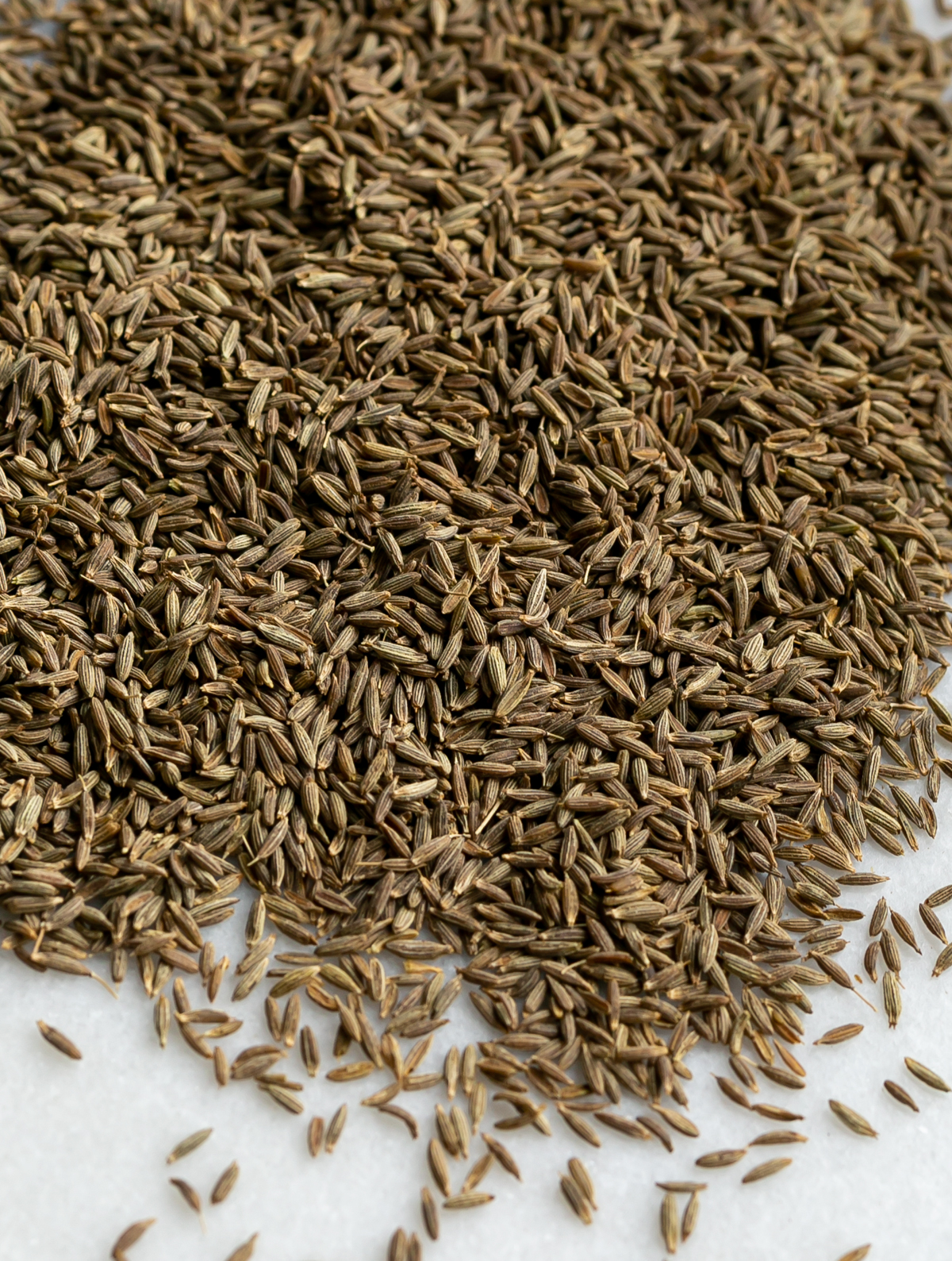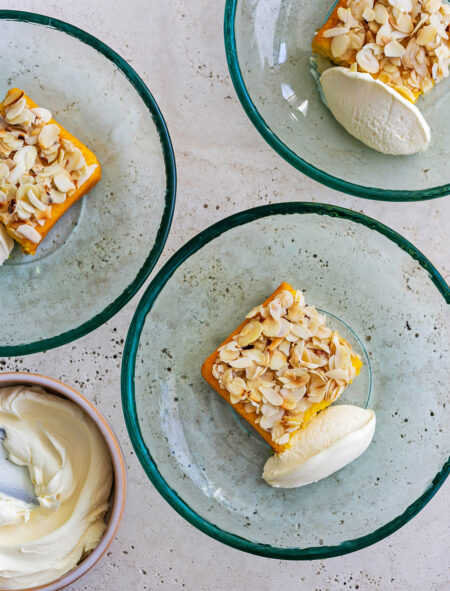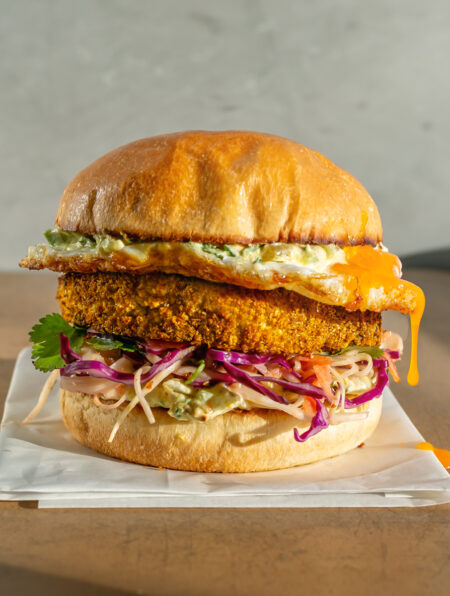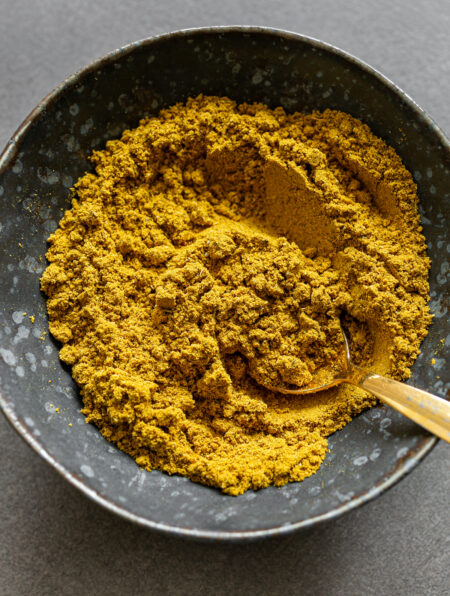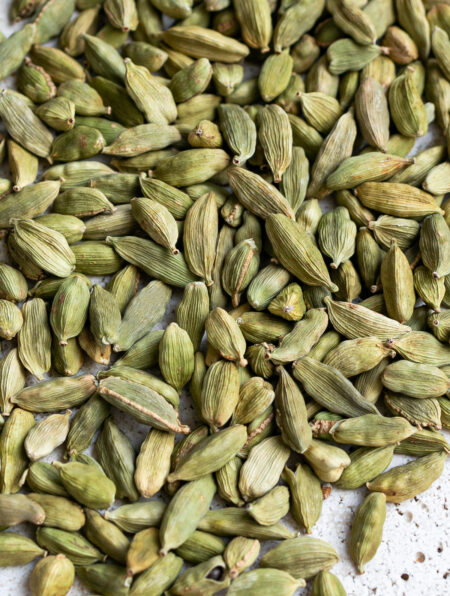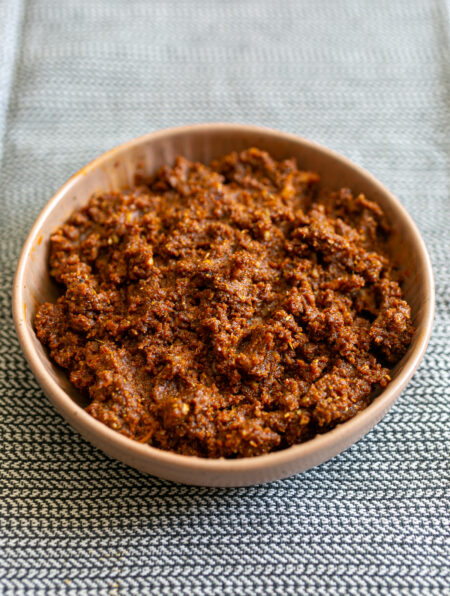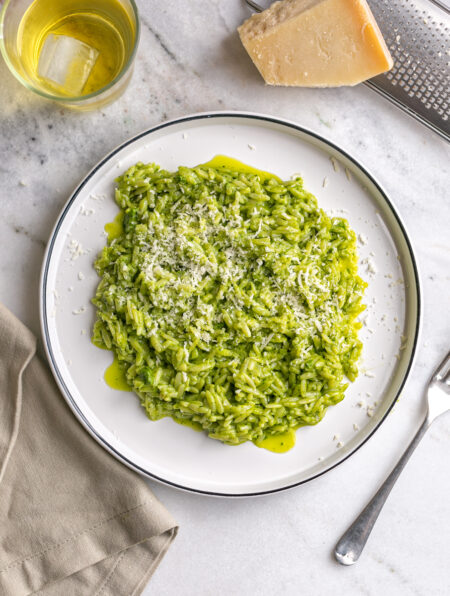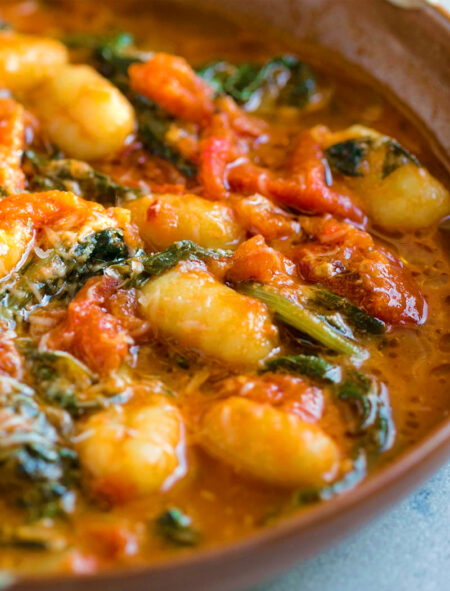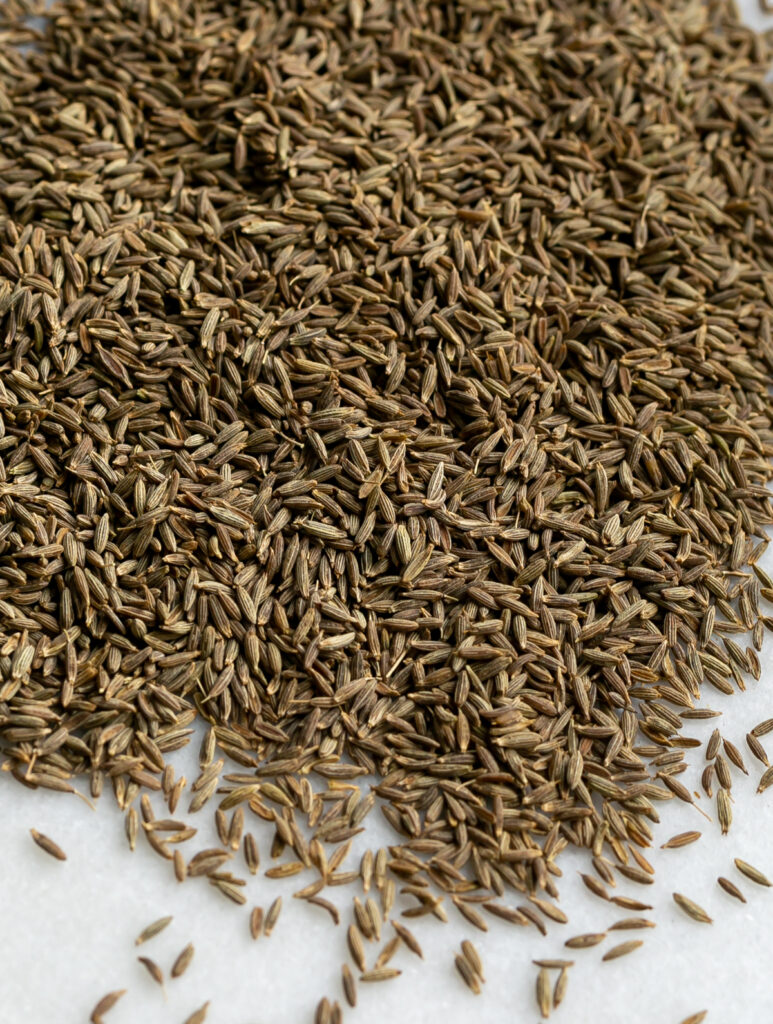
Table of Contents
- What is Cumin?
- The History of Cumin
- What does cumin taste like?
- Cooking with cumin seeds
- When to use ground cumin
- How to grind cumin seeds into a powder
- What flavour does cumin add to cooking?
- How to cook with cumin
- Cumin Flavour Pairings
- Everyday ingredients that pair with Cumin
- Cumin medical uses
- Cumin seed substitutes
- Recipes Using Cumin
What is Cumin?
Cumin is a spice made from the dried seed of a plant with the botanical name Cuminum cyminum, a member of the Apiaceae family alongside its cousins parsley, caraway, and fennel. Cumin is also known and sold as Roman caraway or jeera.
The History of Cumin
Evidence found in Egypt’s pyramids suggests the use of cumin dating back as much as 5000 years ago when ancient Greeks and Romans used it as a seasoning combined with salt. Through a long history of international trading and the spread from North Africa to Iran, Indonesia, China, India and Mexico, cumin has become a key ingredient in many international cuisines around the world.
India is now the largest known producer and consumer of cumin
Cumin forms the flavour base of countless dishes in India, from curries to rice dishes, spiced nuts and other delicious spicy snacks. The introduction and popularity of Indian fast food in Western culture has awakened and normalised the use of cumin in many modern dishes with most people having a jar of the spice in their cupboard.
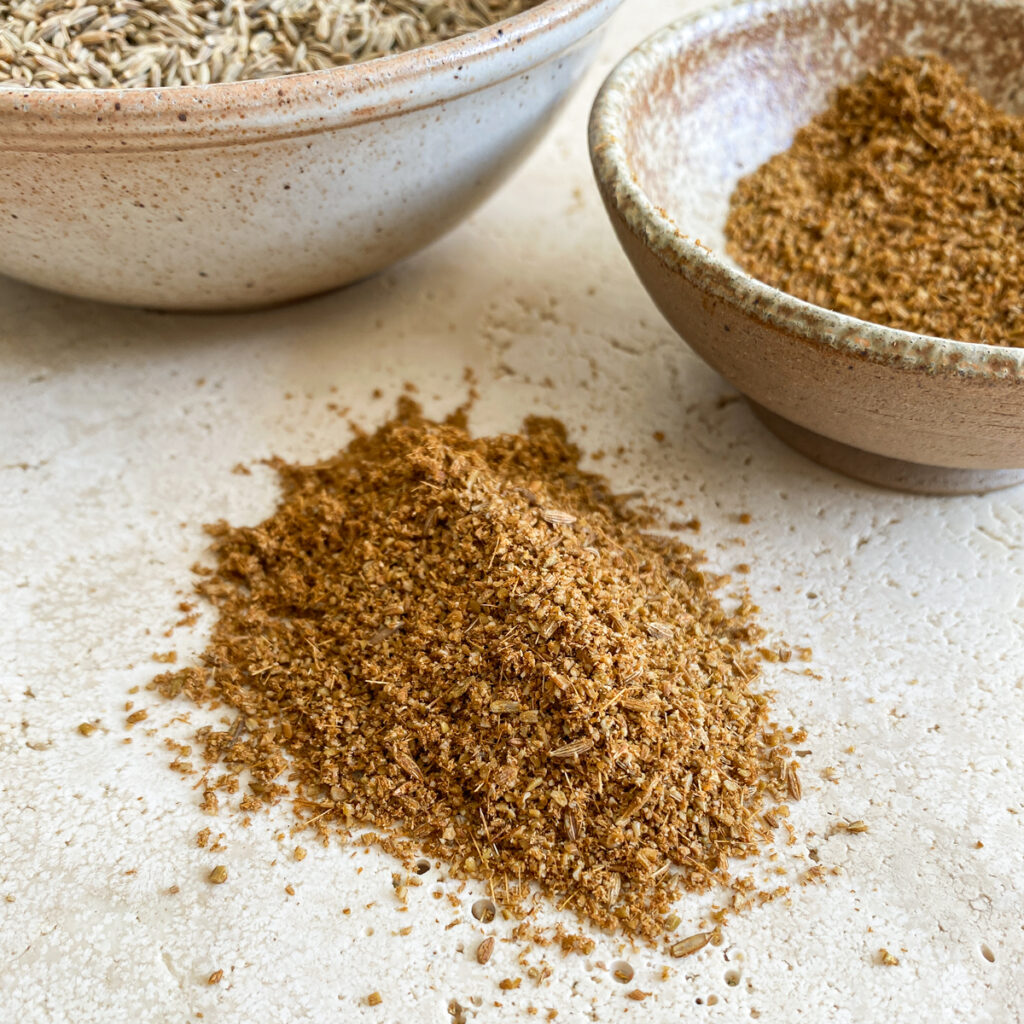
What does cumin taste like?
Earthy, woody, nutty with a herb-like taste. It can be sharp, zesty, and bitter, similar to fresh parsley or carrot skin. Whole seeds need to be toasted in order to release their flavour compounds before grinding down into a powder.
Cooking with cumin seeds
Whole cumin seeds should be added early on in the recipe to allow time for them to soften and release oils and essence. When making a curry, dahl or stew, cumin seeds can be toasted and then added whole at the beginning of cooking to slowly simmer into the sauce and create depth of flavour.
When to use ground cumin
Ground cumin is ideal for shorter cooking times as the flavour can instantly penetrate into whatever is being cooked. Ground cumin is also perfect for adding to burger patties, blended with butter as a baste for vegetables or used as a garnish sprinkled over hummus.
It’s worth noting that freshly ground spices start losing their flavour from the minute they are toasted and ground down. For this reason alone it’s best to only grind small batches at a time and always keep it sealed in an airtight jar.
How to grind cumin seeds into a powder
Do I need to roast cumin seeds before grinding?
The answer is yes! Roasting seeds before grinding helps to release flavour and oils. The process is very simple and is explained below.
- Heat a frying pan or cast iron skillet to medium heat. Add seeds and gently toss around the pan to ensure even toasting. The process can take anywhere from 30 seconds to 2 minutes. The seeds are ready to remove once they have started to gain some colour and their wonderful aroma is released.

- Transfer the seeds to a pestle & mortar or small coffee grinder and grind them down into a powder

What flavour does cumin add to cooking?
Cumin has a flavour profile similar to parsley, celery, caraway and dill. When cooked, it gives a strong earthy, woody, nutty warmth and taste.
Beef pairs especially well with cumin, adding a very pleasing peppery smokiness. Tip: If making homemade beef burgers, add a generous pinch of ground cumin to the minced beef for an amazing earthy flavour boost.
Next time you eat a traditional coal-fired Turkish kebab you should notice the distinct earthy flavour of cumin used as one of the main seasonings.
How to cook with cumin
Cumin pairs wonderfully with lamb, beef, chicken, pork, goat and venison. Combine it with other spices to make a rub for meat, vegetables and fish. Blend into curries, soups and stews. Or sprinkle over eggs, tortillas, flatbreads and hummus.
Cumin with vegetables and grains
Cumin can be used to flavour roasted vegetables such as carrots, cabbage, parsnip, eggplant, onions, peppers, tomatoes, and potatoes, or used to spice rice, bean and lentils along with other grains such as bulgar wheat or couscous.
Cumin and eggs
Cumin is used in Indian and Turkish egg-based dishes, either ground down and included inside the recipe or toasted alongside coriander seeds, added to melted butter and drizzled on top as a delicious fragrant garnish.
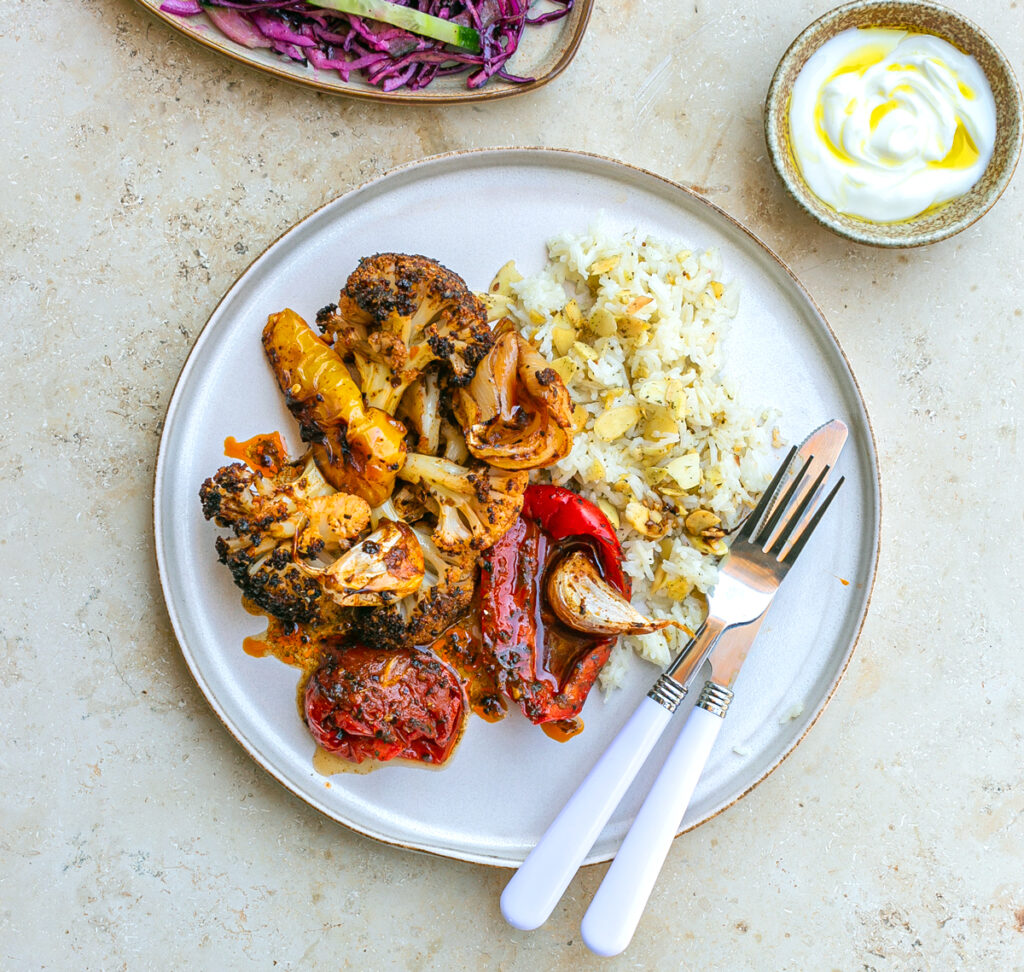
Cumin Flavour Pairings
What spices go with cumin?
Spices that pair with cumin: bay leaf, cardamom, cloves, cayenne pepper, chilli powder, curry leaves, cinnamon, mustard seeds, nutmeg, black pepper, anise, allspice ginger, lemongrass, caraway, turmeric, fennel, fenugreek seeds, dried fenugreek leaves, nutmeg, paprika, chilli, saffron, tamarind
Herbs that pair with cumin (fresh and dried)
Oregano, thyme, parsley, basil, mint, coriander, dill
Popular spice blends using cumin
Harissa, madras curry powder, garam masala, baharat, advieh, hawaij, korma curry paste, vindaloo paste, tikka masala, chaat masala, ras el hanout, dukkah,
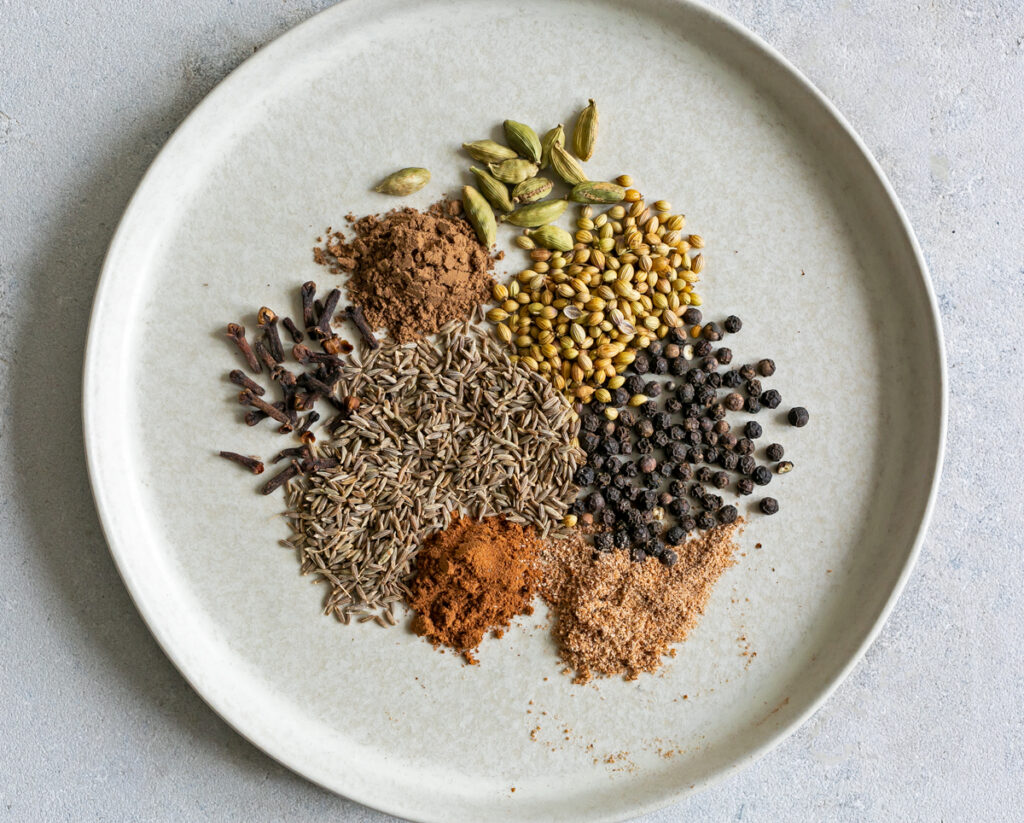
Everyday ingredients that pair with Cumin
- Cumin + Meat: Chicken, turkey, beef, pork, duck, lamb, white fish, salmon, trout, tuna, shellfish
- Cumin + Vegetable: tomatoes, potatoes, sweet potatoes, onions, garlic, fennel, cauliflower, kidney beans, celery, cabbage, aubergine, courgette (squash), pumpkin, red green and yellow peppers (paprika), parsnip, carrots, beetroot, chilli peppers, corn, mushrooms, cucumber, ginger, vegetable root, chickpeas, lentils, rice
- Cumin + Fruit: lemon, lime, orange, apple, apricots, grapefruit, pear, plums, dates, figs
- Cumin + Dairy: ricotta, burrata, mozzarella cheese, feta, halloumi, goats cheese, yoghurt
- Cumin + Nuts: Pistachio, walnuts, cashews, almonds, pumpkin seeds, pine nuts, sesame seeds
- Cumin + Other: Honey, maple syrup, caramel, chutney, dried fruits, coconut milk, eggs, bread
Cumin medical uses
Cumin contains compounds that are thought to act as antioxidants in the body. Antioxidants can help neutralize unstable particles called ‘free radicals’ that cause cell damage. In the practice of Ayurvedic medicine neutralizing these particles can help prevent diseases like cancer, heart disease, and high blood pressure so regularly including the use of cumin is a good idea.
Cumin seed substitutes
Ground coriander – As another member of the parsley family, ground coriander is a reasonable option for substituting cumin. It also has the earthy, lemony flavour of cumin, but lacks the pepper kick. For every teaspoon of ground cumin, try substituting 3/4 tsp ground coriander with 1/4 tsp mild chilli powder.
Recipes Using Cumin
Below is a selection of meat, vegetarian, sweet and savoury recipes using whole and ground cumin seeds

Courgette Fritters with Salsa and Crispy Fried Eggs
Cumin and dried fenugreek leaves add an earthy touch that pairs so well with freshly grated tomatoes, courgette and a crispy fried egg. Recipe here
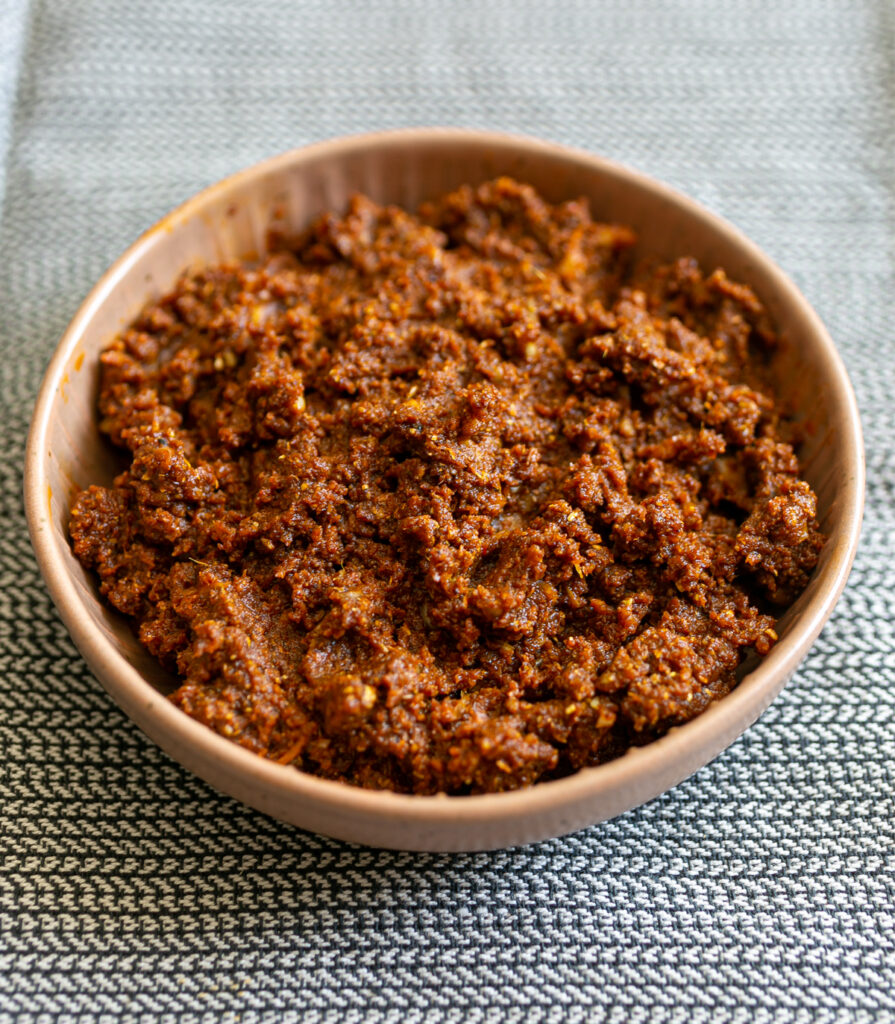
Korma Curry Paste
One of the world’s most loved curry paste blends using a mix of fragrant spices including cumin. Perfect for anyone who loves Indian flavours but is averse to excessive spiciness and chilli in their food. Recipe here
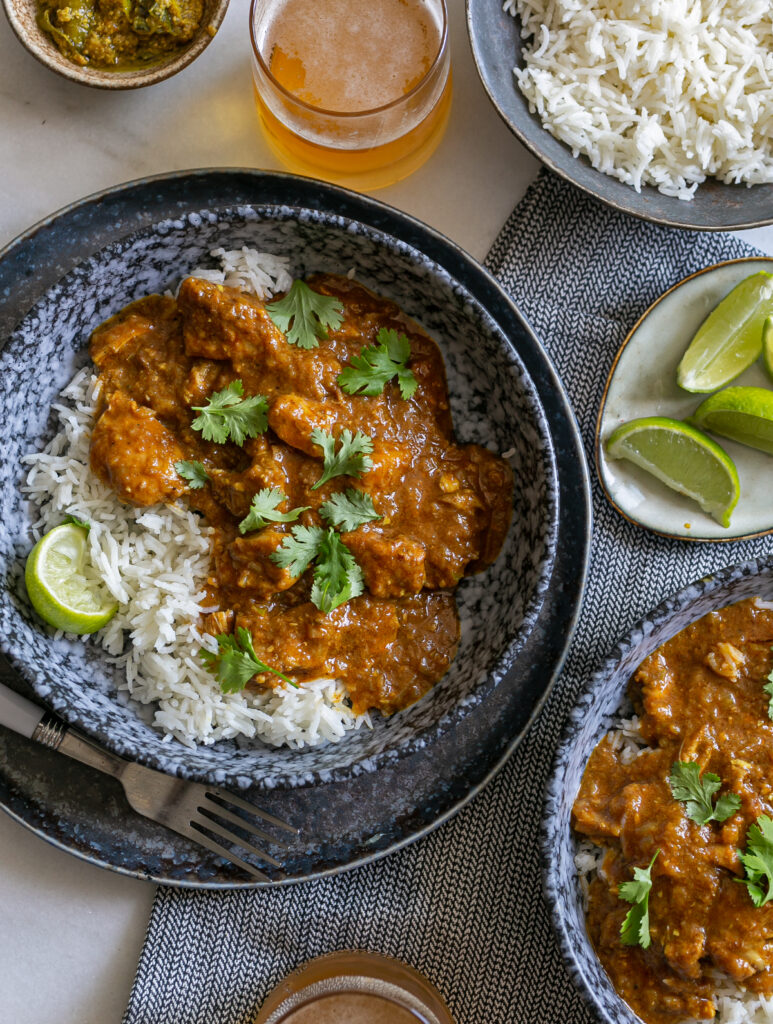
Mango Korma Chicken Curry
You might think adding fruit to your curry base sounds a little strange, but the sweet soft notes of fresh mango blend harmoniously into a cumin-infused korma curry paste and creamy coconut milk sauce couldn’t be more right. Recipe here
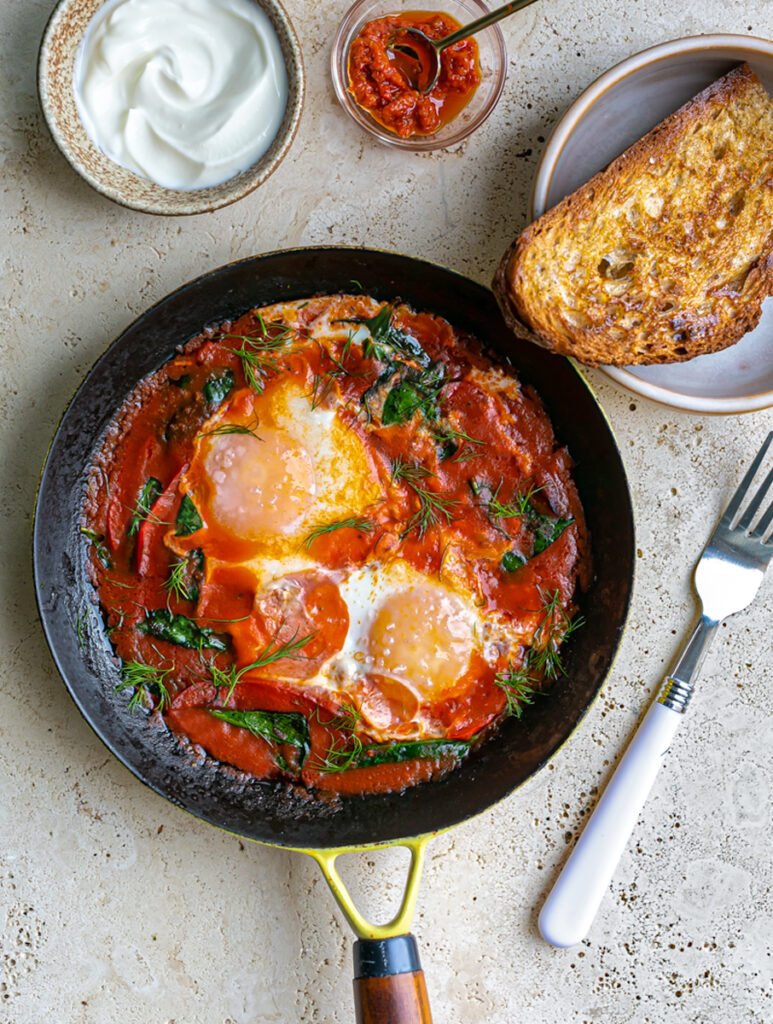
Shakshuka For One
This easy Shakshuka For One eliminates most of the preparation time by using a magic tomato sauce for speed, cumin for spice and caramalised red peppers for a rich flavour. Recipe here
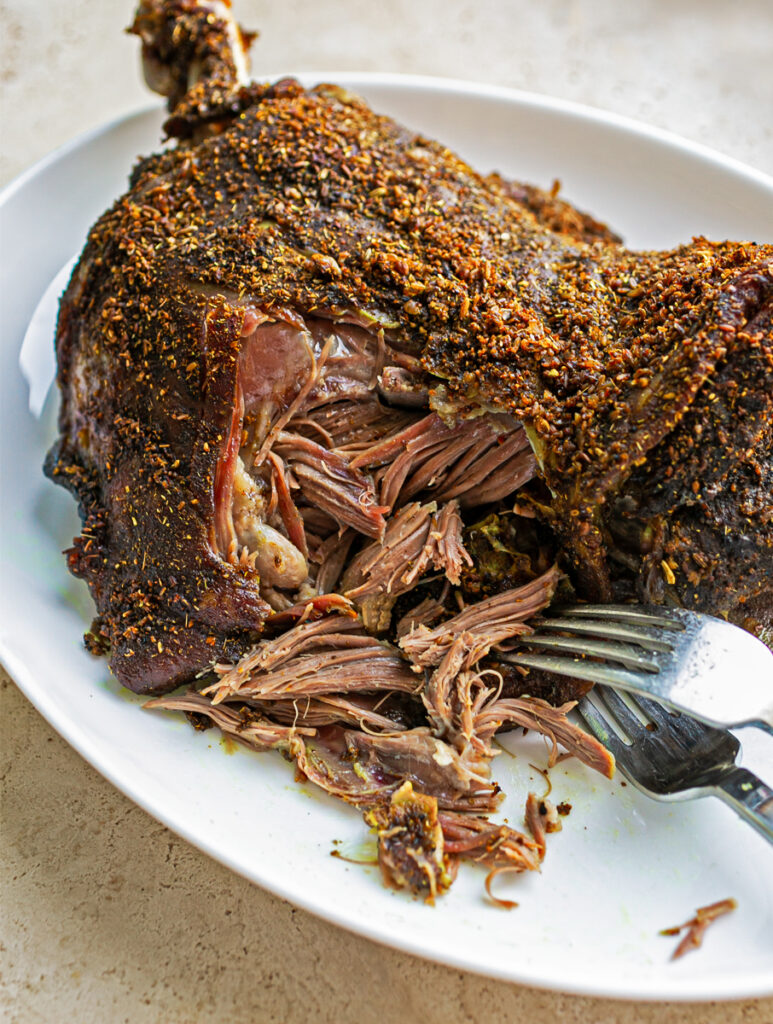
Slow-Roasted Madras Lamb Shoulder
This beautiful cut of lamb on the bone is enhanced by an Indian Madras curry spice rub using cumin seeds along with coriander, fennel and other fragrant spices. Recipe here
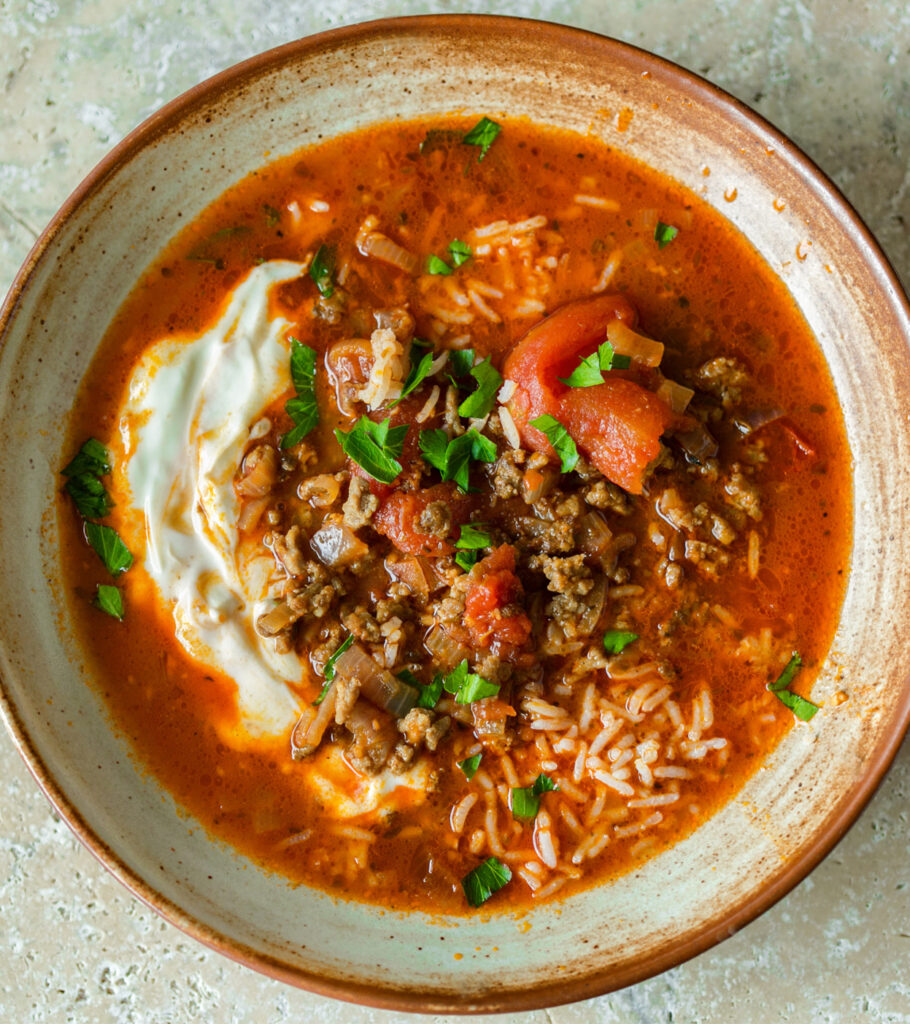
Moroccan Beef Mince Stew
Smoked paprika, cumin and oregano make a wonderful and simple spice combination powerful enough to give instant intense flavour to this easy beef and rice stew. Recipe here
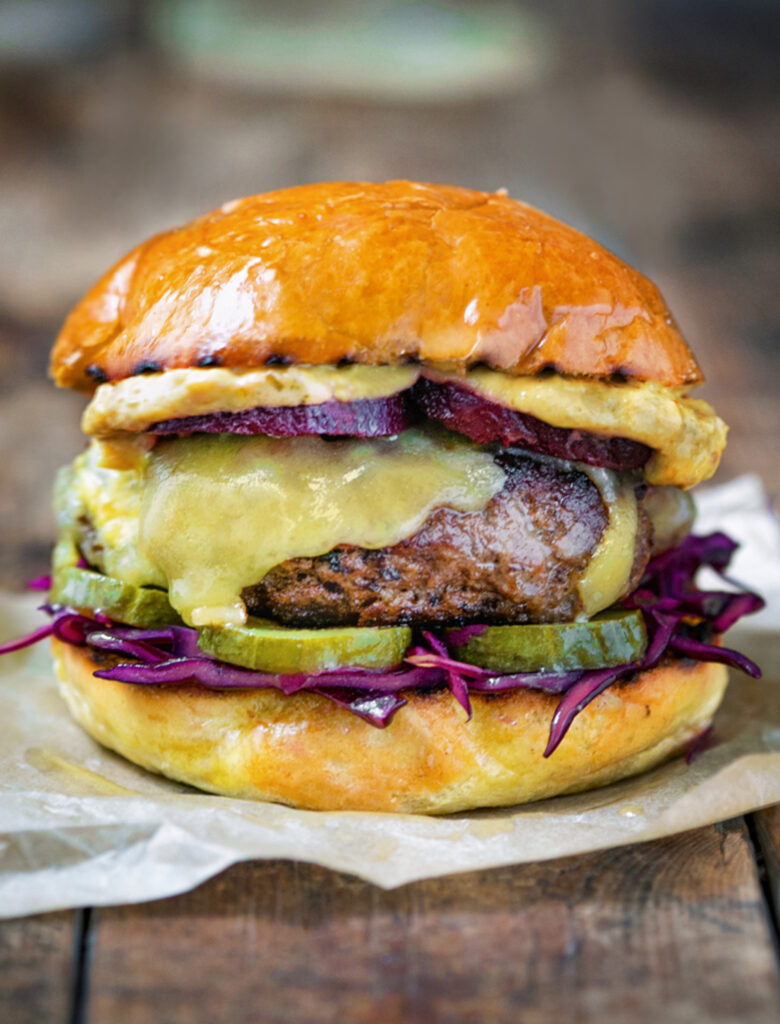
Beetroot Beef Burger
Cumin and beef are the perfect flavour partners and this burger doubles up on compatibility with the deep earthy nutty beetroot joining the party. Recipe here

Scrambled Tomato Feta Dill Eggs
Deliciously spiced and umami-rich-tasting scrambled eggs infused with garlic, tomatoes, cumin, smoked paprika and sumac topped with feta and dill. Recipe here
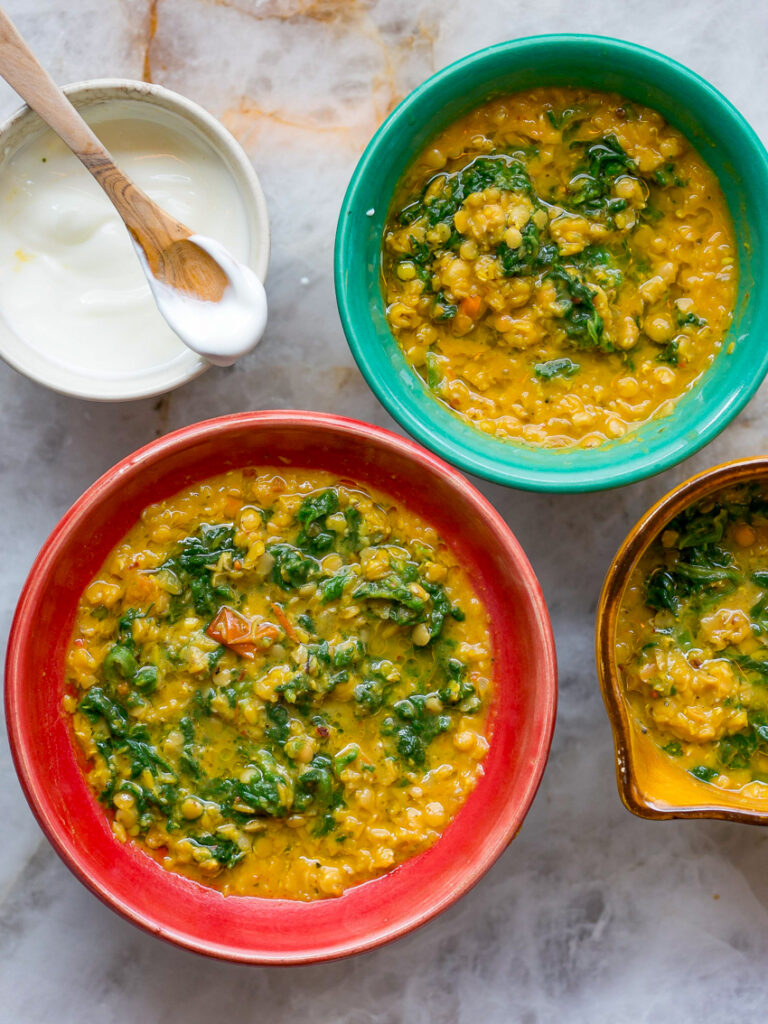
Spinach and Roasted Tomato Dahl
Roasted tomatoes and zingy lemon juice give cumin-spiced lentils a juicy, fresh Mediterranean touch. Serve with rice or homemade flatbreads. Recipe here

Harissa-Honey Glazed Roasted Vege
Carrots and parsnips are slow-roasted to perfection and caramelized with a spicy harissa-cumin-honey glaze, creating a combination of harmoniously balanced sweet and salty flavours. Recipe here
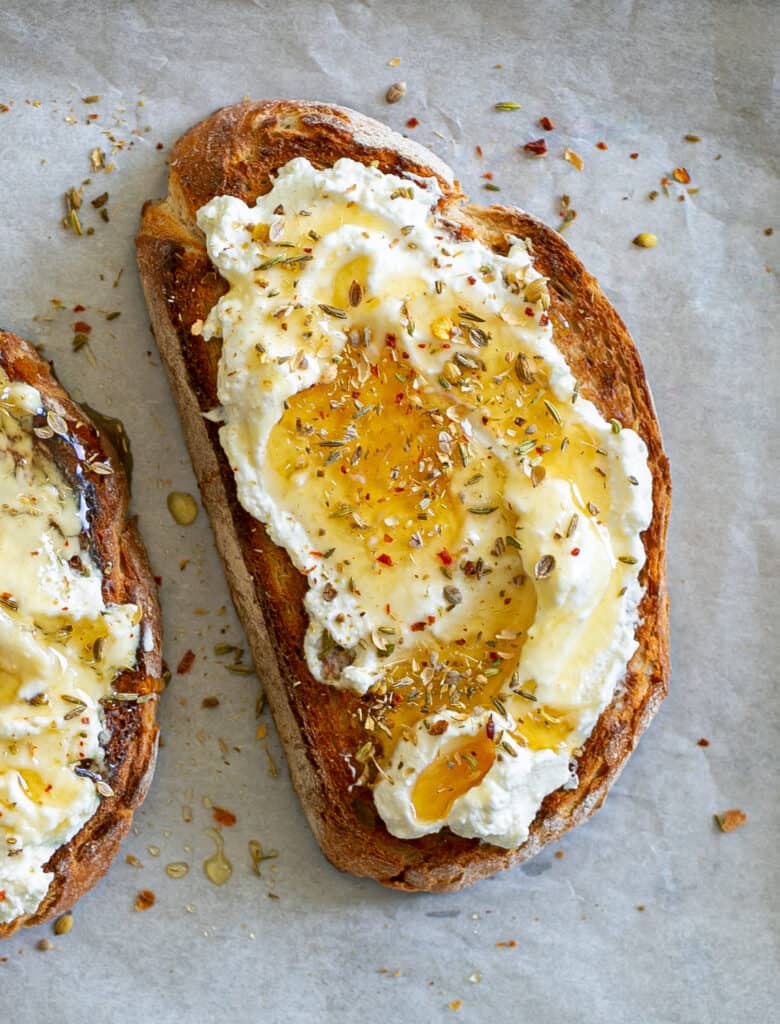
Spiced Ricotta Honey Toast
Whole coriander seeds are dry roasted along with cumin and fennel and crushed down with a touch of chilli. The spice mix is then sprinkled over creamy ricotta toast drizzled with honey. Recipe here
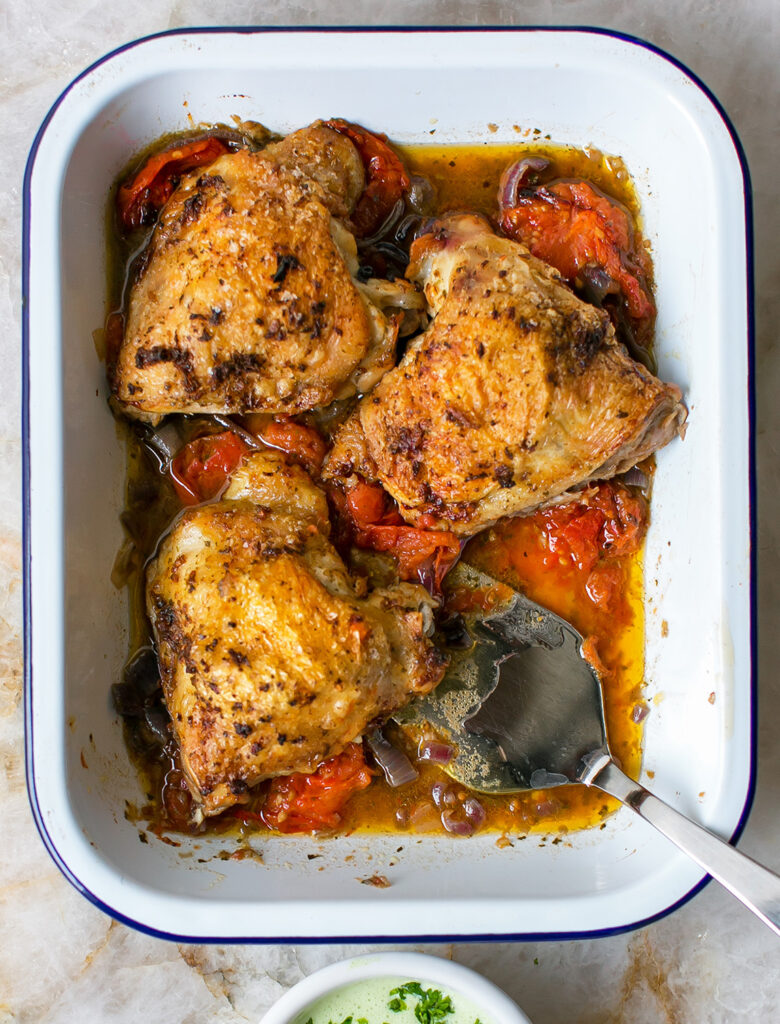
Garam Masala Roasted Chicken
Easy roast chicken with garam masala, cumin and fenugreek spice, basted in a chicken-fat-roasted-tomato-and-onion sauce and served with a light refreshing coriander yoghurt. Recipe here

